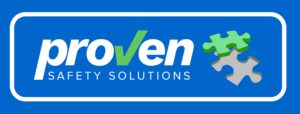Occupational hygiene, also known as industrial hygiene, is the science and art of looking after the health and well-being of workers and the communities we work in. The following content is provided by an expert in the field, Julie Moore of Penquin Health Solutions.
Occupational hygiene is a multi-disciplinary science which draws on aspects of toxicology, chemistry, physics, physiology, maths, and engineering to be able to assess workplace toxins such as dust, noise vibration, light and toxic gases.
The science of occupational hygiene also extends to a further range of workplace health hazards such as thermal extremes (hot and cold), ergonomics, radiation, microbes and other biological hazards, fatigue and other psychosocial factors.
Penguin Health Solutions is pleased to offer this extensive range of occupational health and hygiene services. We help Prepare employers by understanding what hazards are present in their workplaces, then work to put controls in place to Prevent exposure to hazards that harm human health and Protect those workers who may be exposed to health hazards at work.
What is an Occupational Hygienist?

An Occupational Hygienist is a professional who anticipates, recognises, evaluates, and controls health and safety concerns by designing solutions to prevent them.
Those in the profession are usually university-trained science professionals and members of the Australian Institute of Occupational Hygiene (AIOH). There are different levels of membership to the AIOH depending on your qualifications and level of experience in the field.
Image: Julie Moore, Director and Principal Occupational Hygienist.
What are the 4 Principles of Occupational Hygiene?
There are four (4) guiding principles Occupational Hygienists follow to prevent work-related illnesses:
1. Anticipation
This is the first principal of occupational hygiene and is the process of determining what hazards are present and what might be present. This principle typically requires a walkthrough survey of the workplace design, operations, processes, work tasks, materials, worker job roles and population. Review of any chemical inventories and Safety Data sheets also occurs at this stage.
2. Recognition
The second principle of occupational hygiene emphasises the importance of recognising and understanding the potential hazards of the work environment, internal processes, and job tasks, including chemical and physical hazards. Reviewing the chemical inventory to see if there are occupational exposure limits or restrictions for any hazardous products is an important step here.
3. Evaluation
The health hazards identified in the anticipation and recognition steps will inform what is evaluated during the occupational hygiene exposure assessment. This assessment is crucial in determining whether the exposure levels are within acceptable limits and if additional control measures are needed to reduce the risk. This is where measurements of exposures to specific agents occurs.
4. Control
Controlling worker exposure to as low as reasonably practicable is the final guiding principle of occupational hygiene. It refers to the concept of implementing measures to eliminate or, where that is not possible, to reduce worker exposure to health hazards in the workplace. The hierarchy of controls is applied, with Personal Protective Equipment (PPE) the last control considered.
What does a typical week for an Occupational Hygienist look like?
No two days as an Occupational Hygienist are ever the same. A week in the life of an Occupational Hygienist can include:
- spending time in workplace measuring exposure levels to toxins, gases or dust
- observing different sites and the potential for exposure to ill health or injury
- talking to the people in their workplace about whether the controls to prevent harm are effective
- conducting health risk assessments with workers and their employers
- helping workers with correct fitment of their PPE
- interpreting lab results
- researching and identifying emerging health hazards
- designing practical solutions from scientific data and collaborating with maintenance leaders, process and automation engineers
- preparing reports for organisational leaders, recommending new controls or ways of working to protect people and communities
What is a Certified Occupational Hygienist?
The Certified Occupational Hygienist (COH)® status is the highest level of recognition for a professionally competent, independent and ethical occupational hygienist. Certified Occupational Hygienists are leaders in the field with a minimum 5 years’ post-graduate experience. It is an internationally recognised status and equivalent to overseas certification programs for occupational hygienist.
Penguin Health Solutions is pleased to offer the services of Julie Moore, who is an award-winning Certified Occupational Hygienist (COH)® with more than 10 years’ experience in the field. Julie Moore was recognised in 2023 as the AIOH Dräger Young Hygienist of the Year.
Need help managing health risks in your workplace?
Penguin Health Solutions have the knowledge and expertise to help you effectively manage the hazards in your workplace. Contact Penguin Health for assistance with Occupational Hygiene.
| PH: +61 408 960 740 | Email: admin@penguinhealth.com.au |




